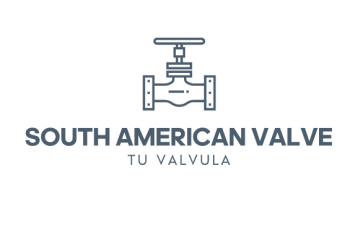Pinch Valve
South American Valve is top Pinch Valve Manufacturer in Mexico. A pinch valve is a type of valve that uses a pinching mechanism to control the flow of fluid. The valve consists of a flexible tube or sleeve that can be pinched or squeezed shut to stop the flow of fluid. Pinch valves are commonly used in applications where the fluid contains solid particles or other abrasive materials that could damage other types of valves.
The main function of a pinch valve is to control the flow of fluids by pinching or squeezing a flexible tube or sleeve. When the sleeve is pinched, it restricts the flow of fluid through the valve. When the sleeve is released, the fluid is allowed to flow through the valve.
The pinching action is controlled by an actuator, which can be manually operated, electric, or pneumatic. The actuator moves a stem that is connected to the sleeve, causing it to pinch or release.
The sleeve is the most critical part of a pinch valve as it forms the seal between the valve body and the fluid being controlled. The sleeve is typically made of a durable elastomer material that is resistant to wear and tear, corrosion, and high temperatures.
The main parts of a pinch valve include:
- Body: The body of the pinch valve is typically made of a durable material such as cast iron, stainless steel, or plastic. It houses the flexible tube or sleeve that controls the flow of fluid.
- Sleeve: The sleeve is the flexible tube that controls the flow of fluid. When the sleeve is pinched or squeezed shut, the flow of fluid is stopped. The sleeve is typically made of rubber or other elastomers that can withstand the pressure and temperature of the fluid being handled.
- Pinch mechanism: The pinch mechanism is the part of the valve that pinches or squeezes the sleeve to control the flow of fluid. It is usually operated by an actuator, which can be manual or automated.
- Actuator: The actuator is the part of the valve that operates the pinch mechanism. It can be manual, hydraulic, or electric, depending on the application.
Advantages
- Cost-effective: Pinch valves are generally less expensive than other types of valves, making them a cost-effective option for many applications.
- Easy maintenance: Pinch valves are relatively simple in design and can be easily maintained or repaired. The flexible sleeve can be replaced without removing the valve from the pipeline.
- Versatility: Pinch valves can be used in a wide range of applications, including mining, water treatment, food and beverage processing, and more.
- Efficient flow control: Pinch valves provide efficient flow control, especially for fluids containing solids and other abrasive materials. The flexible sleeve can be pinched shut, reducing wear and tear on the valve and prolonging its life.
Applications
- Mining: Pinch valves are used in mining applications to control the flow of slurries containing abrasive materials, such as sand, gravel, and coal.
- Water and wastewater treatment: Pinch valves are commonly used in water and wastewater treatment plants to control the flow of fluids containing solids, such as wastewater sludge, sewage, and chemicals.
- Chemical processing: Pinch valves are used in the chemical processing industry to control the flow of corrosive chemicals and other materials that could damage other types of valves.
- Pulp and paper: Pinch valves are used in the pulp and paper industry to control the flow of fluids containing pulp and other materials used in the production of paper.
- Oil and gas: Pinch valves are used in the oil and gas industry to control the flow of fluids containing solid particles, such as drilling mud and fracking fluids.
The main parts of a pinch valve are:
- Body: The body is the main housing of the valve that contains the internal parts and provides a passage for fluid to flow through.
- Sleeve: The sleeve is a flexible tube made of materials such as rubber, silicone, or other elastomers. The sleeve is the part of the valve that is pinched or squeezed to control the flow of fluid.
- End connections: The end connections are the inlet and outlet ports that connect the valve to the piping system.
- Actuator: The actuator is the part of the valve that controls the pinching or squeezing of the sleeve to regulate the flow of fluid. Actuators can be manual, pneumatic, or electric.
- Stem: The stem is the rod that connects the actuator to the sleeve and is responsible for opening and closing the valve.
- Bonnet: The bonnet is the cover that protects the internal parts of the valve.
- Gland: The gland is a component that compresses the sleeve to ensure a tight seal between the sleeve and the body
Electric Actuated Pinch Valve
Pinch Valve
Pinch Valves






